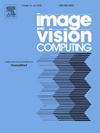Edge guided and Fourier attention-based Dual Interaction Network for scene text erasing
IF 4.2
3区 计算机科学
Q2 COMPUTER SCIENCE, ARTIFICIAL INTELLIGENCE
引用次数: 0
Abstract
Scene text erasing (STE) aims to remove the text regions and inpaint those regions with reasonable content in the image. It involves a potential task, i.e., scene text segmentation, in implicate or explicate ways. Most previous methods used cascaded or parallel pipelines to segment text in one branch and erase text in another branch. However, they have not fully explored the information between the two subtasks, i.e., using an interactive method to enhance each other. In this paper, we introduce a novel one-stage STE model called Dual Interaction Network (DINet), which encourages interaction between scene text segmentation and scene text erasing in an end-to-end manner. DINet adopts a shared encoder and two parallel decoders for text segmentation and erasing respectively. Specifically, the two decoders interact via an Interaction Enhancement Module (IEM) in each layer, aggregating the residual information from each other. To facilitate effective and efficient mutual enhancement between the dual tasks, we propose a novel Fourier Transform-based Attention Module (FTAM). In addition, we incorporate an Edge-Guided Module (EGM) into the text segmentation branch to better erase the text boundary regions and generate natural-looking images. Extensive experiments demonstrate that the DINet achieves state-of-the-art performances on several benchmarks. Furthermore, the ablation studies indicate the effectiveness and efficiency of our proposed modules in DINet.

求助全文
约1分钟内获得全文
求助全文
来源期刊

Image and Vision Computing
工程技术-工程:电子与电气
CiteScore
8.50
自引率
8.50%
发文量
143
审稿时长
7.8 months
期刊介绍:
Image and Vision Computing has as a primary aim the provision of an effective medium of interchange for the results of high quality theoretical and applied research fundamental to all aspects of image interpretation and computer vision. The journal publishes work that proposes new image interpretation and computer vision methodology or addresses the application of such methods to real world scenes. It seeks to strengthen a deeper understanding in the discipline by encouraging the quantitative comparison and performance evaluation of the proposed methodology. The coverage includes: image interpretation, scene modelling, object recognition and tracking, shape analysis, monitoring and surveillance, active vision and robotic systems, SLAM, biologically-inspired computer vision, motion analysis, stereo vision, document image understanding, character and handwritten text recognition, face and gesture recognition, biometrics, vision-based human-computer interaction, human activity and behavior understanding, data fusion from multiple sensor inputs, image databases.
 求助内容:
求助内容: 应助结果提醒方式:
应助结果提醒方式:


